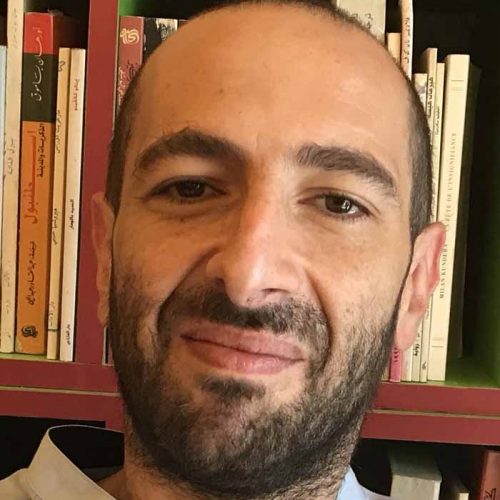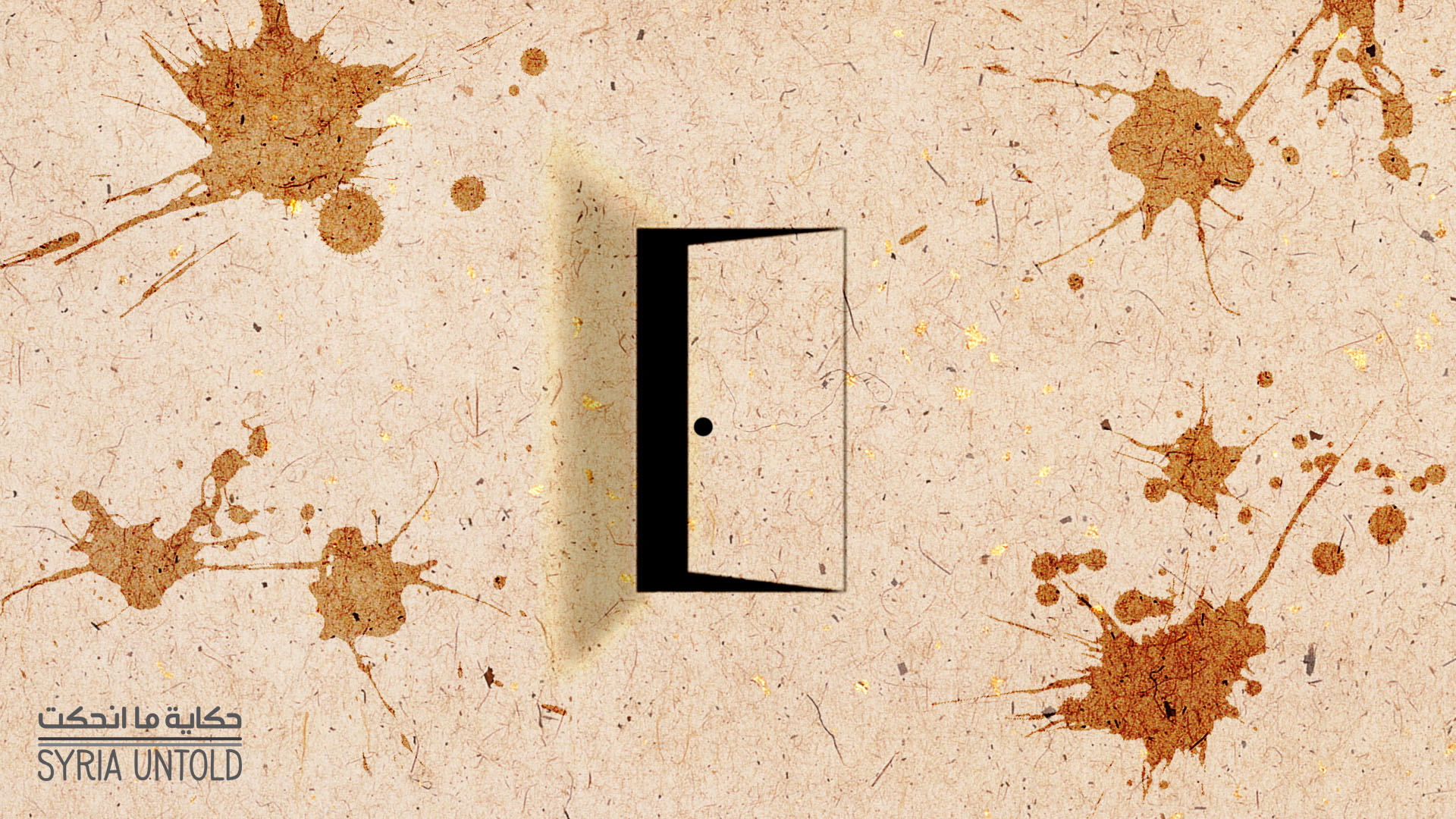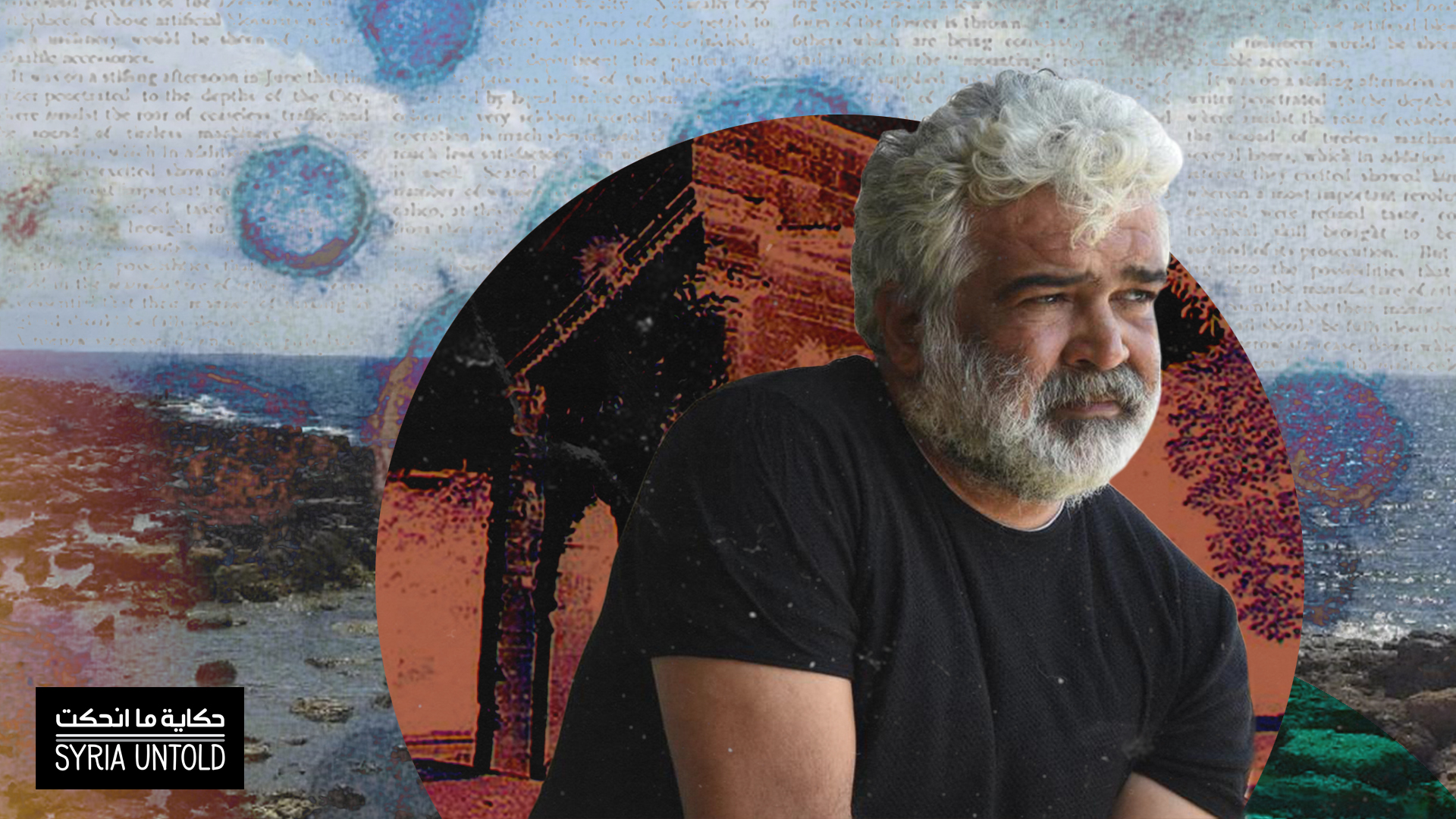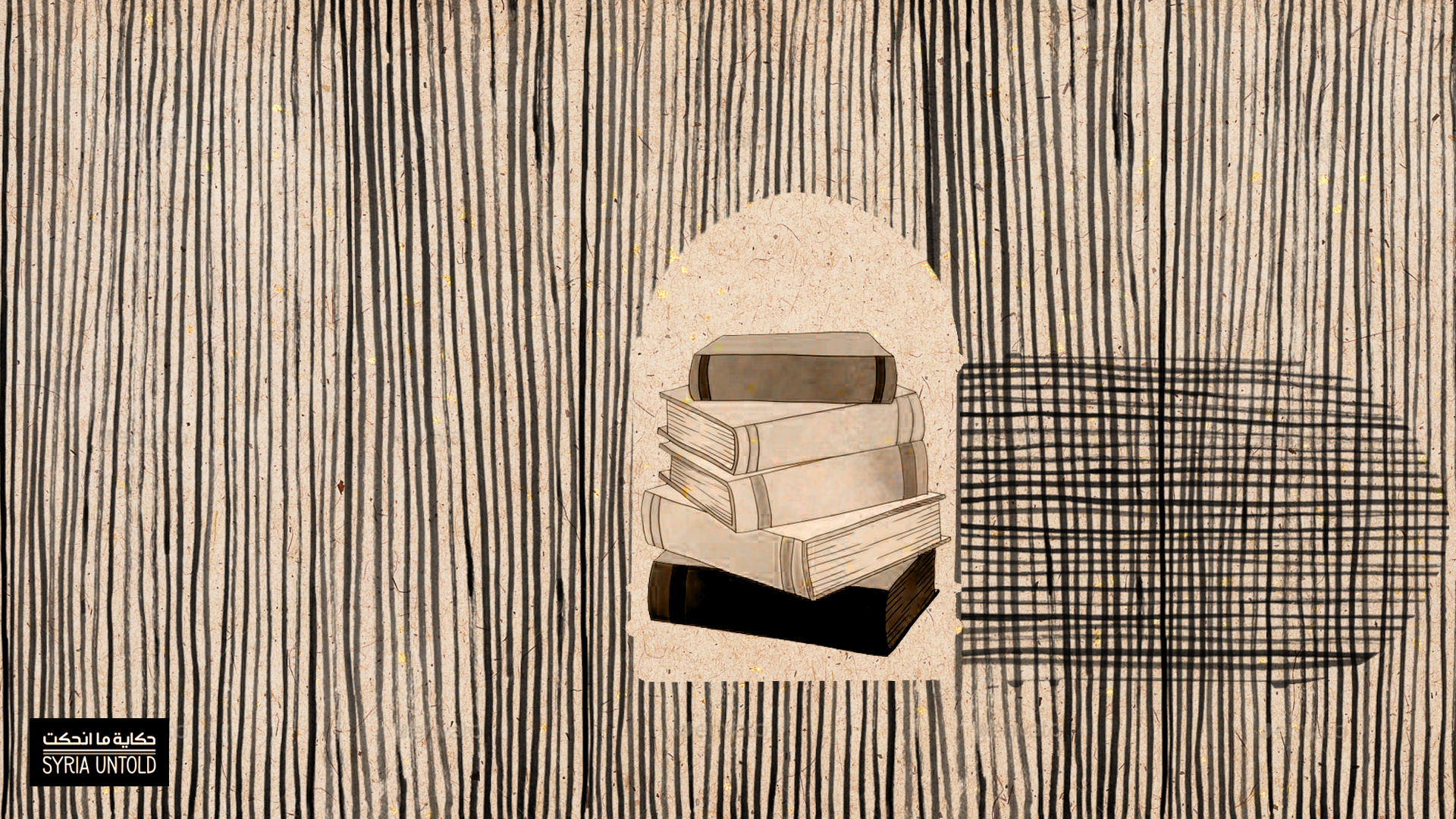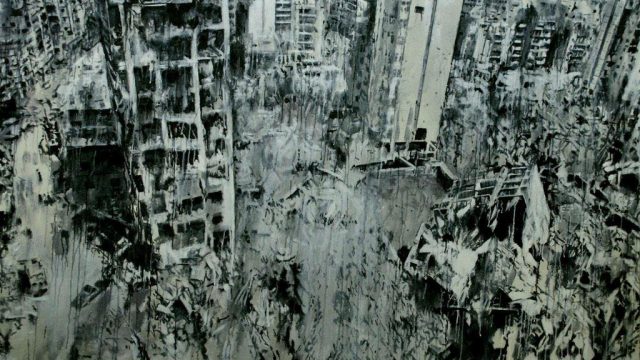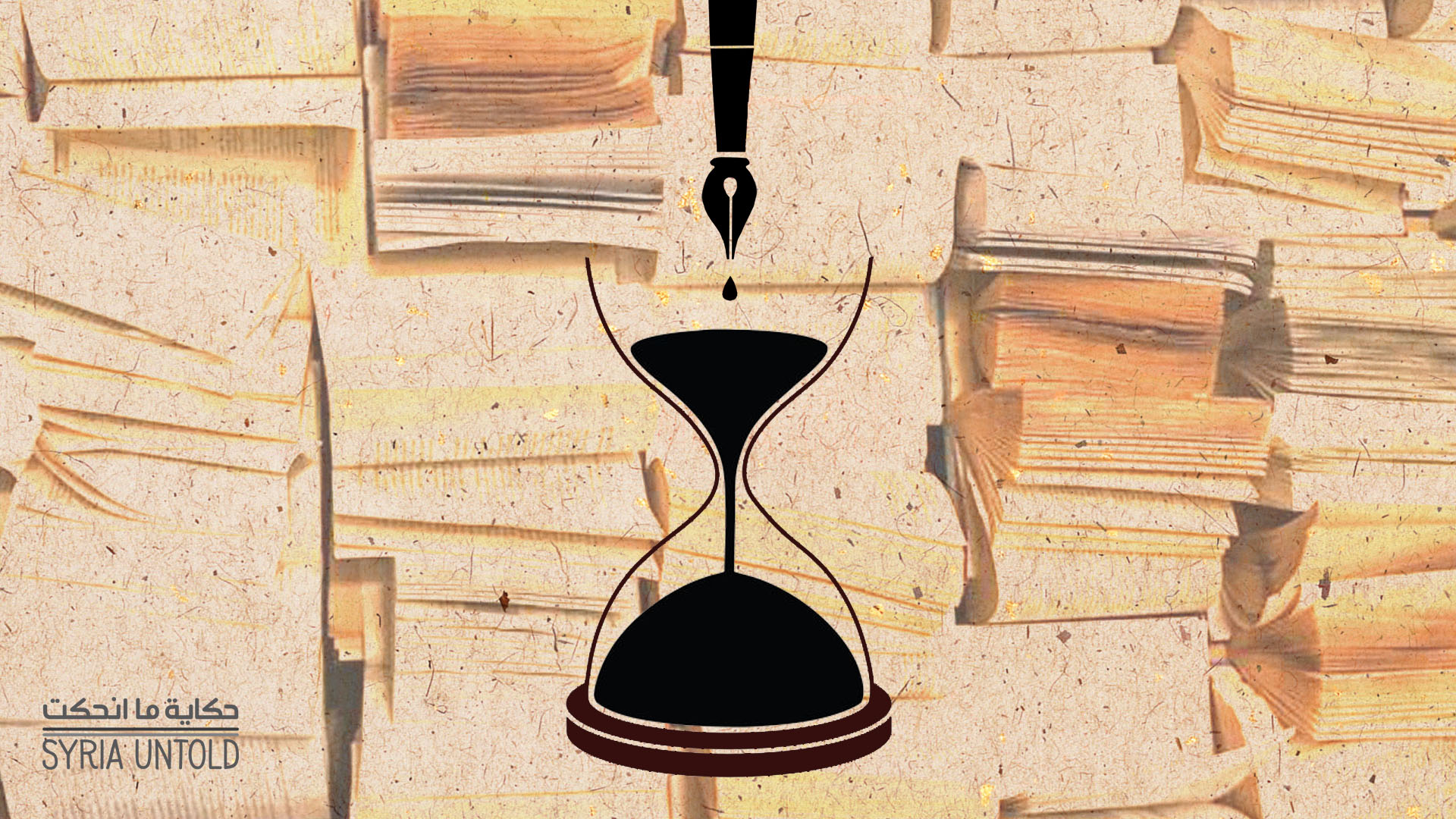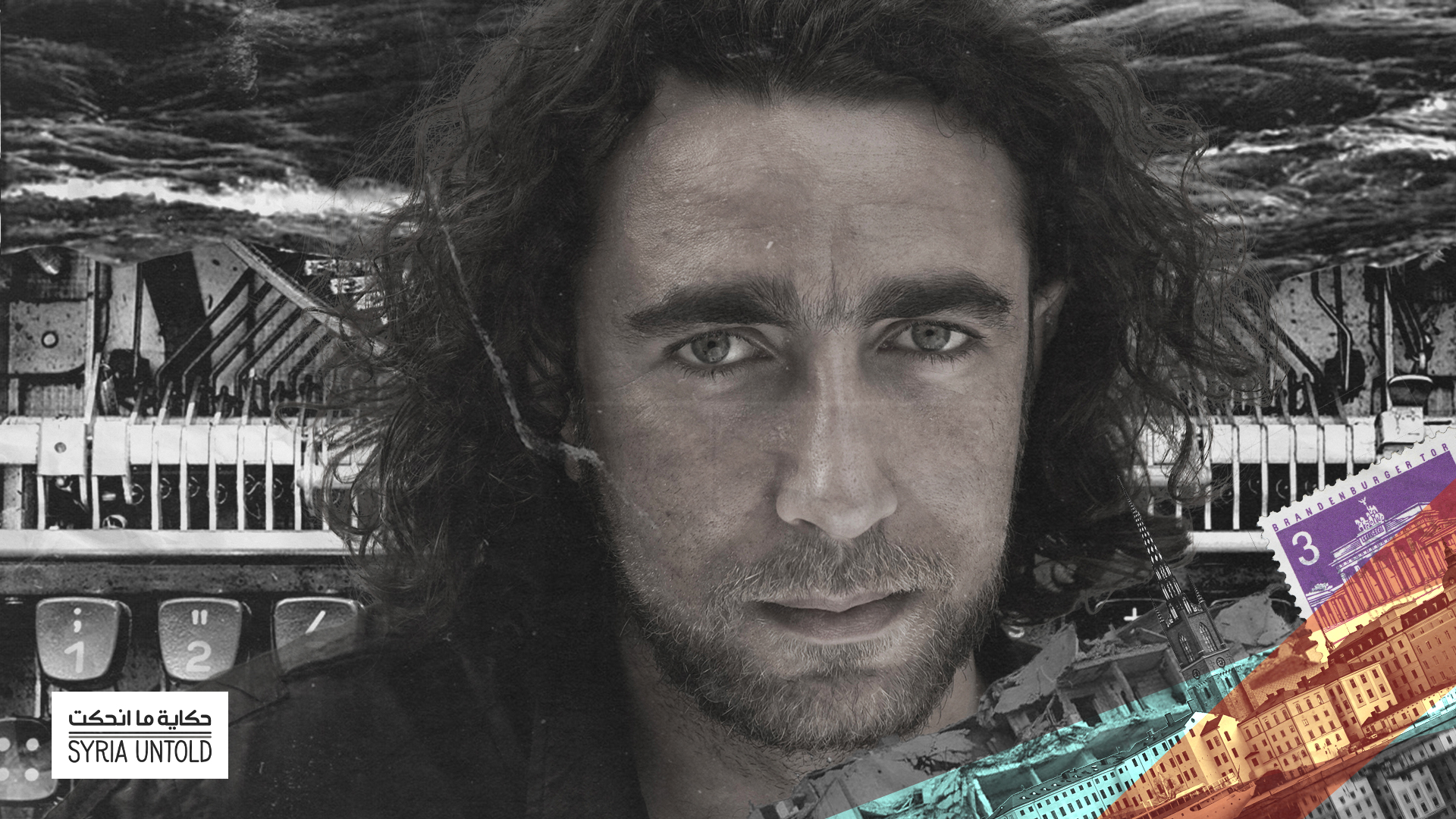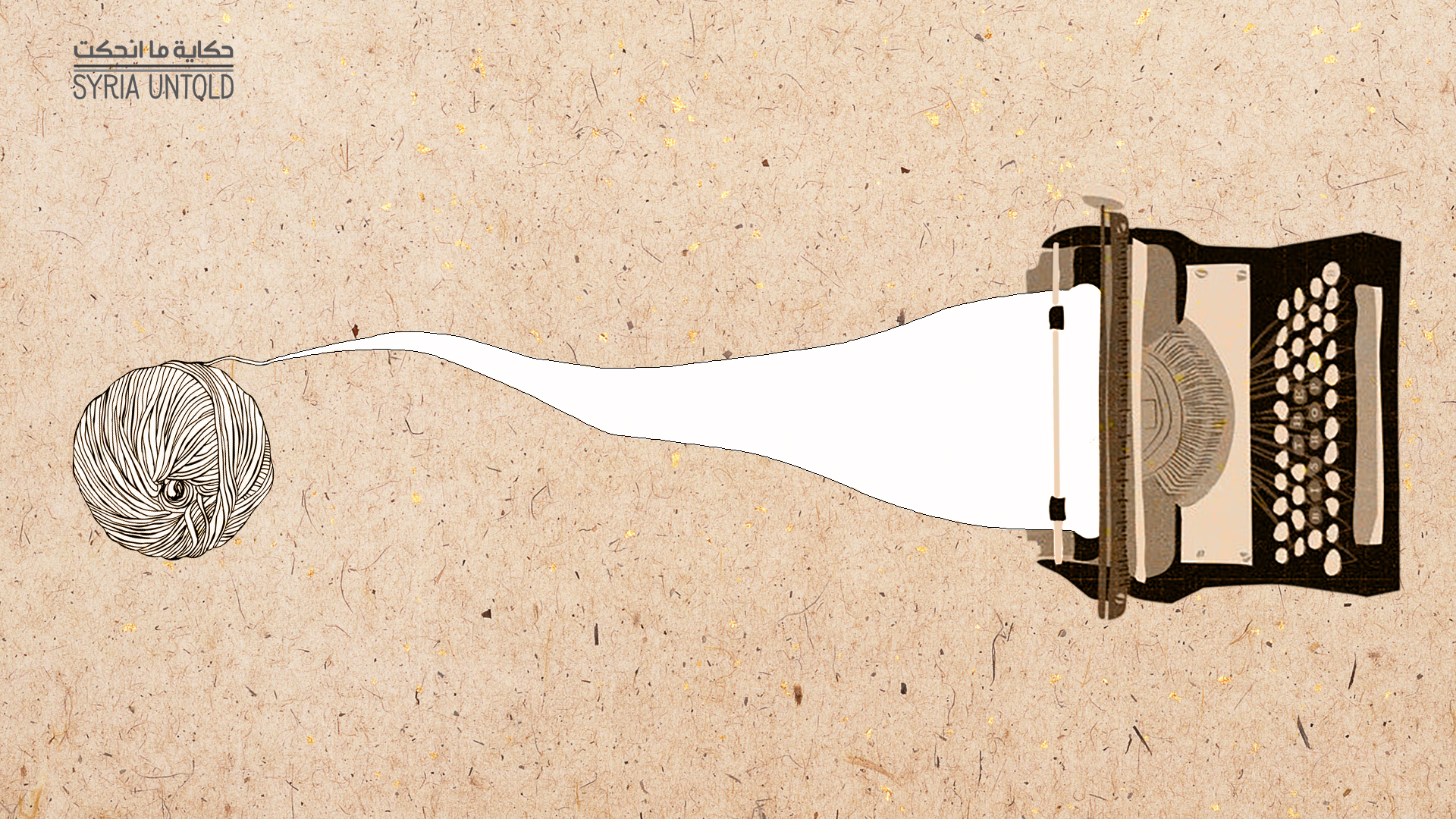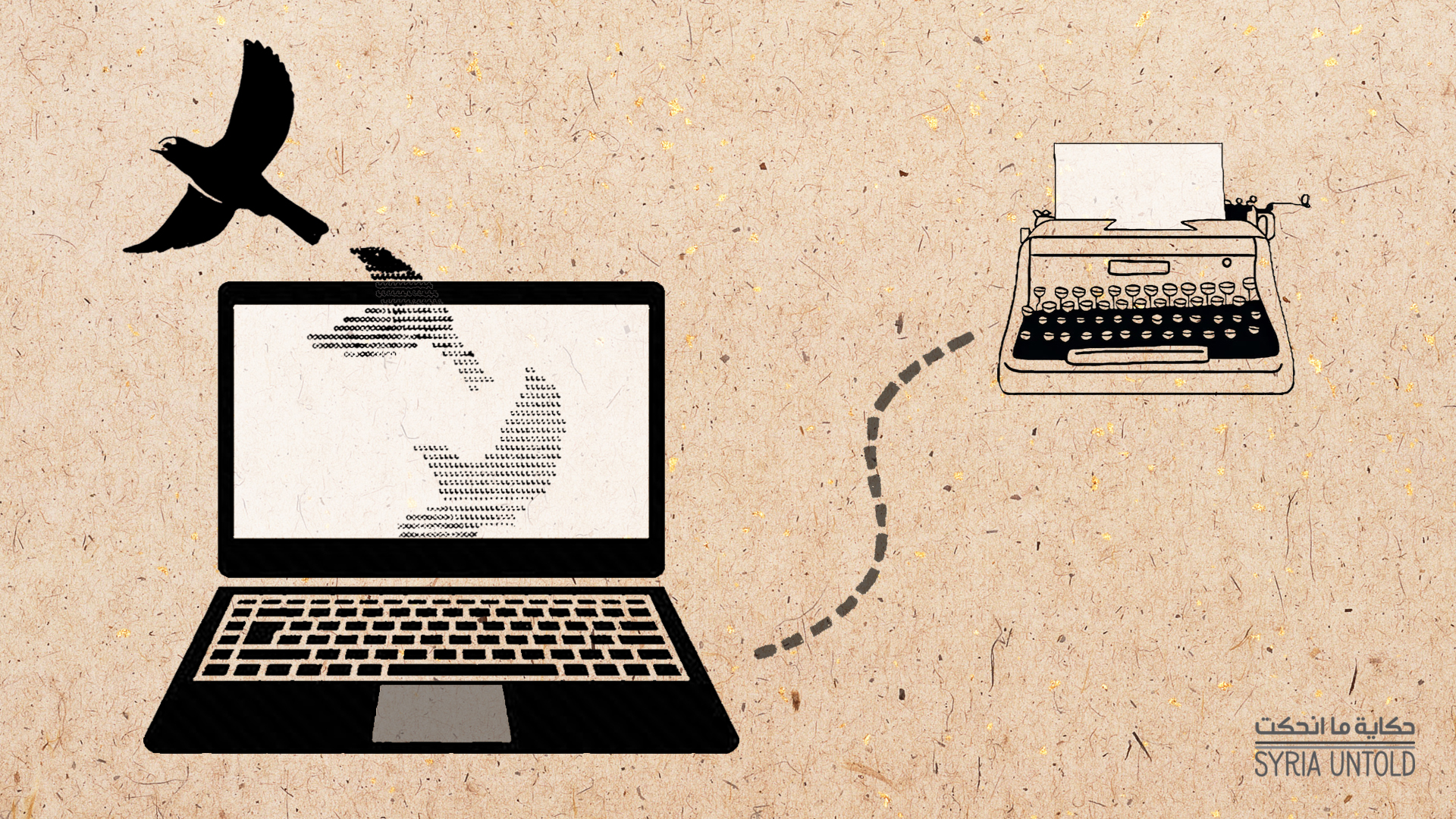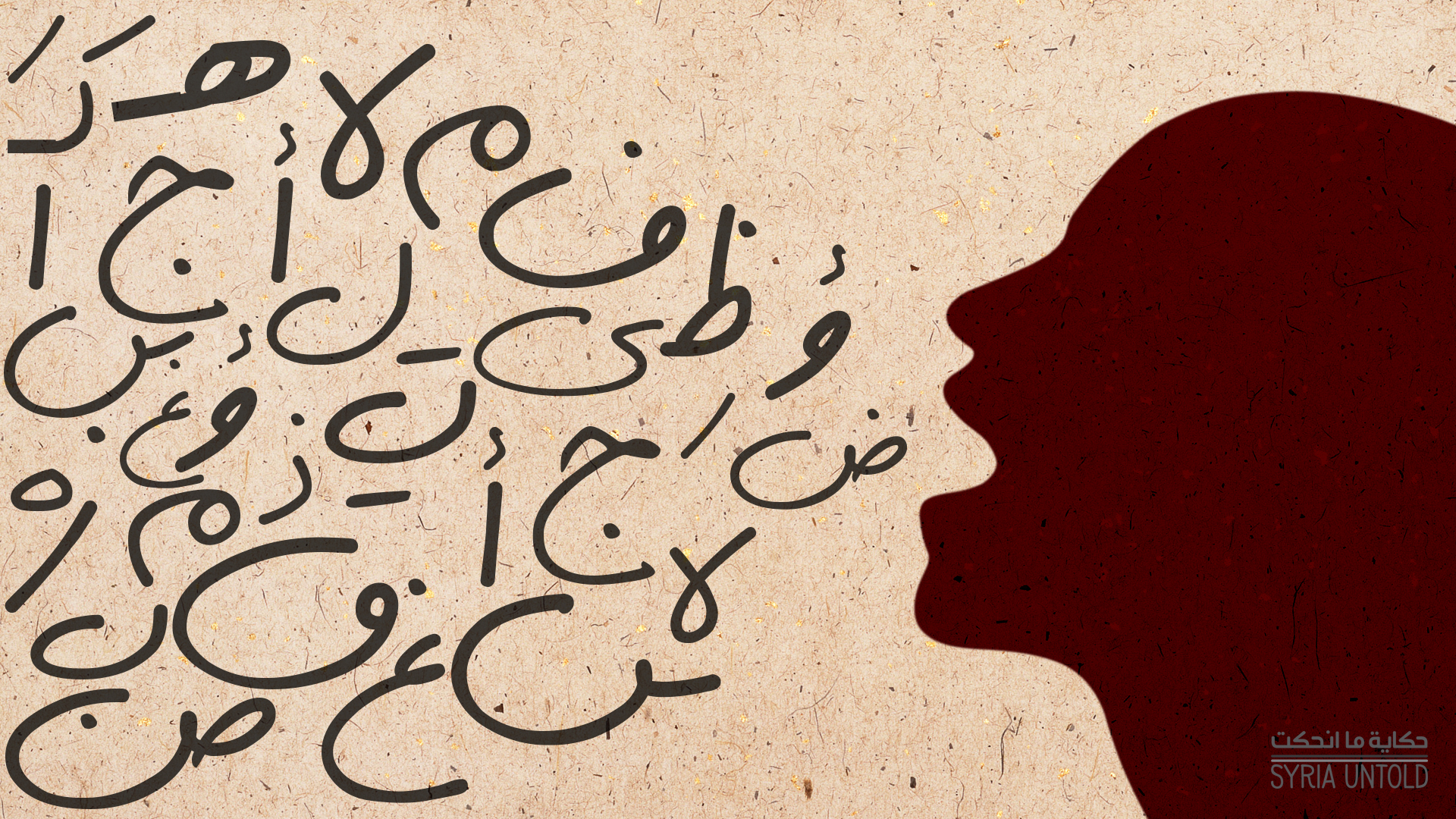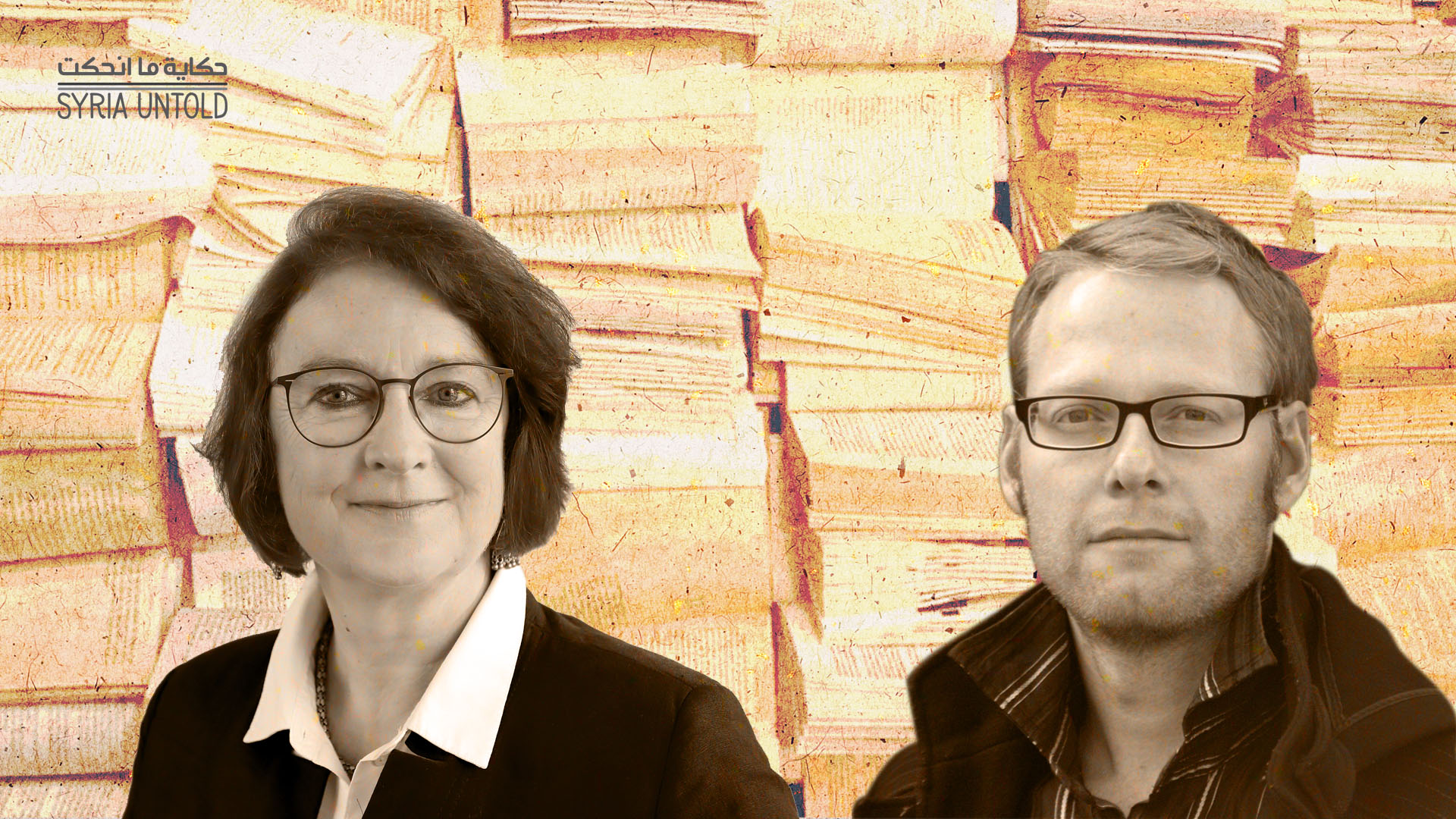Read this essay in Arabic here. This piece is part of a limited series on shifting narratives in Syrian literature, guest edited by novelist Rosa Yassin Hassan.
In 2015, the Nobel Prize for Literature was awarded to the Belarusian writer Svetlana Alexievich, whose work mixes narration, journalistic techniques and direct observation, recording testimonies and documentation.
Alexievich was among the main voices representing an international narrative experience which cemented that literary genre: the documentary novel. This genre influenced many narrative experiences across the world, including the Syrian novel, which, like other forms of art, acquired new artistic features in the wake of the huge political and social events of 2011.
When all arts leaned towards political commitment, combined with a profound need to protect memories from oblivion, novels took the same path. Documentation was a key characteristic of that phase. After 2011, narrative documentation prevailed over fiction and novels, compared to allegorical or historical fantasy. Novels specialized in the documentation of a current historical moment dominated the Syrian narrative scene.
What pushed Syrian narrative arts toward documentation? What are the political and social events that Syrian novelists wanted to document? What are the narrative techniques that were used to carry out this documentation?
The Syrian novel: Enlightenment in the face of darkness
23 February 2021
Syria’s year of pain, through the eyes (and pen) of Khaled Khalifa
21 November 2020
Documentary novels
Many critics believe Samar Yazbek’s A Woman in the Crossfire (2012) was among the first narrative works related to the Syrian uprising and published after it. The complete title, A Woman in the Crossfire: Diaries of the Syrian Revolution, reflects the documentary aspect of the book.
The prologue of the novel includes what resembles a statement explaining the documentary purpose of the text and indicates that the narrative is composed of a compilation of real-life testimonies of the events of the first four months of the uprising. The book also tells stories about Syrian cities by documenting their inhabitants’ testimonies. Since the text is in the form of diaries, the paragraphs carry specific dates starting from March 25, 2011 to July 9, 2011.
All these features can be considered characteristics of the documentary novel, such that the narrator writes: “People say that writing a novel requires imagination, but I think it requires reality.”
In A Woman in the Crossfire, Yazbek documents the first protests in Damascus and writes about the security phenomena that spread in the city. She also talks about the protests supporting the regime, which used violence against opposition members before the eyes of the police forces. She writes about the formation of popular committees and discusses the official media discourse, which she believes contributed to widening the divide between the Syrian people, feeding their ideological tendencies and making them more resistant to the news broadcast by international media channels.
In terms of documentary narrative styles, documentary novels rely on direct observation of the event and meeting with eye-witnesses, which are well-known journalistic techniques, in addition to transmitting what is reported in the media. In that area, the documentary novel discusses the role of pro-regime channels in spreading hatred and calling for the elimination of anyone who disagrees with them.
Documentation by narrative characters
The documentary aspect of Rosa Yassin Hassan’s novel Between Water Ropes (2019) relies on a different technique. The element of documentation emanates from the main character in the story, Tamouz, who seeks to achieve his dream of producing movies at the onset of the revolution.
Tamouz carries his camera and embarks on the documentation journey, which is the journey of the novel. The documentary films and scenarios he captures constitute the technique that the novel uses to document the events in Syria, from the stories of rebellious areas to the armed fighting and migration of Syrians by sea on the boats of death.
Syrian media activists reporting from heated areas of the country were also famous on international media. The main character in the novel would use the documents to make the films and introduce readers to the political, social and violent events, among others, that have shaped Syria’s reality.
Politics and the Syrian novel: A mutual influence
16 February 2021
Raqqa, at the center of the universe
16 August 2020
Documentation through fiction
Perhaps Khaled Khalifa’s Death is Hard Work (2016) does not seem to classify as a documentary novel because its narrative plot is completely fictional.
But, through the story, the narrator tackles several security, political and social phenomena that surfaced in Syrian society. The novel tells the journey of a family through different geographical areas in Syria to bury the body of their deceased father. Although it is a journey of burial, we discover details about the intense security presence in Damascus and the deployment of military and armed checkpoints around the city and elsewhere.
The discussions in the novel also center on heated current topics such as the transformation of the peaceful revolution into an armed one portending a civil war. The discussion then delves deeper into the presence of National Defense members and forces allied with the regime like Hezbollah, Iraqi recruits and others.
Khalifa’s novel also explores the opinions of pro-regime family members who called for burning Daraa and destroying the rebellious areas. Groups from the opposite end of the spectrum carry out similar acts, such as calling for burning and killing regime supporters and cheering for their slaughter.
Through an accurate description of the discourse happening on websites, we discover the mutually violent discourse in the divided Syrian society.
Thematic documentation
Some novels have aimed at narrating a main story, but in the process, they expressed key social and political themes using a high level of documentation. Maha Hassan’s Drums of Love (2013) documented the beginnings of the Syrian revolution and the ongoing discussions, especially among intellectuals. This was evident in the title of the novel’s third chapter “Velvety Intellectuals.”
In the first chapter, she documents slogans written by Daraa’s children on the walls, and the slogans repeated by protesters. She also writes about the arrest of intellectuals, including poets Mohammad Dibo and Omar Idlibi. In a rare move in narrative texts, the author adds a footnote reference to define the term shabiha (pro-regime thugs), which has been used in Syria and exported to the Arab world.
The second chapter, “The Syrian Nightmare,” includes testimonies of foreign journalists who were present in the conflict zones and described what they experienced, like photographer William Daniel and British journalist Paul Conroy, whose stories intertwine with the literary narration. The author includes in her text once again footnotes introducing the reader to the term “coordination committees” that were formed as part of the revolutionary movement. Hassan also uses the documentation technique by blending news reports in the text, like a quote from Al-Hayat documenting the new Syrian draft constitution of 2012, and another news piece from the Syrian Observatory for Human Rights reporting the killing of 68 citizens in rural Homs. A testimony from the pro-opposition journalist Hadi Abdullah appears in the text, where he mentions the difficulties of displacement from Homs.
Arts, reality and the test of time
09 February 2021
In her novel Good Morning, War (2017), Hassan documents the work of the Local Coordination Committees, which were a new administrative phenomenon of the revolution. The text also mentions the ways in which regime security authorities dealt with humanitarian relief workers in opposition-held areas of Syria. Hassan writes about what was dubbed the “Milk Petition,” when a group of Syrian artists and intellectuals signed a petition calling on the government to lift the food siege from Daraa’s children. The signatories were accused of treason and were boycotted by production companies.
In a similar vein, Jan Dost’s novel Green Bus Leaves Aleppo (2019) documents Islamic State control over Manbij city and the hardship that activists suffered due to the oppressive practices against them.
Documentation through stories
When talking about documentation through stories, one must mention Rosa Yassin Hassan’s Touched by Magic (2016), with its subtitle: Fragments of Stories. Documentation is the not the key purpose in this novel, as the author does not mention “diaries or testimonies,” rather “stories” that might be realistic or fictional.
But the stories in the novel, most of which are realistic, bring the narrative close to documentation of the Syrian social and political situation. The novel includes overlapping stories, characters and areas to narrate events in Syria. For that reason, the fictional aspect intertwines with the documentary one; thus invoking documentation, similar to previous novels.
Hassan writes about protests in heated areas in rural Damascus, and mentions the resounding cheers. She consecrates an entire chapter, “The Spray Man and the Wall Conversations,” to the phenomenon of the “Spray Man”: a rebel who used the art of graffiti to express his political and social views.
The heated debates between the novel’s characters assert the aspect of documentation and memory. One character says: “I think I have always wanted to be part of the event, but without being in the forefront, just as I am doing today. Without my pictures and films, the event would not be engraved in memory. Still, I am not in this memory that is mummified in pictures.”
Literature of testimonies
In the field of literature, not the narrative one specifically, we can mention the 30-issue Syrian Testimonies series published by Bayt al-Mouwaten. It is a series of testimonies of Syrian female and male writers in the form of narrative and poetic texts and diaries as well as articles. The literature of testimonies appeared in 2011, and it contains a wide documentary element that comprises all textual arts, like autobiographies, poetry, stories and novels, among others.


